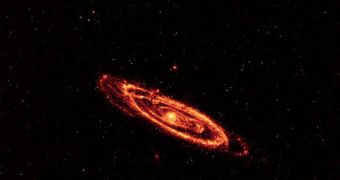Astronomers at NASA report that one of their newest telescopes is currently detecting space rocks at a very high rate. The mission, whose main goal is to perform one and a half full rotations around the Universe, will create one of the most advanced and detailed maps of all cool objects in the Cosmos. Managers say that the telescope is scheduled to end it mission in late October. In the meantime, its sensitive detectors appear to be capable of identifying about a dozen of new asteroids and other space rocks each day, all of which have been lurking in our solar system since the Sun formed, or shortly after, Space reports.
The Wide-field Infrared Survey Explorer (WISE) telescope was launched on December 14, 2009, and its main job is to produce a full survey of the known Universe in infrared wavelengths. Its photon detectors are incredibly sensitive, and researchers managing it hope to catch glimpses of hidden objects that are hiding from other observatories, such as ultra-cold asteroids and other space rocks, brown dwarfs and very distant galaxies. All these targets are so cold that they are invisible in the visible light-range of the electromagnetic spectrum.
“WISE has worked superbly. These first images are proving the spacecraft's secondary mission of helping to track asteroids, comets and other stellar objects will be just as critically important as its primary mission of surveying the entire sky in infrared,” says the NASA Headquarters associate administrator for science missions, Ed Weiler, from Washington DC. One of the most beautiful photographs that the telescope sent back was of the stellar nursery called NGC 3603, which is located in the Carina spiral arm of the Milky Way, some 20,000 light-years away from Earth.
Discovering cold asteroids is very difficult, as they cannot be spotted by observatories working in visible light wavelengths. Only infrared telescopes can look for these hidden objects, and the main condition for them to succeed is for them to keep their detectors cooler than their targets are. WISE manages to do that beautifully, hence the large amount of data it collects each day. “WISE has only been in orbit for about three months, but we've already found a handful of asteroids classified as 'potentially hazardous,' including one seen in 1996 but lost until re-observed by WISE,” explains University of California in Los Angeles (UCLA) physicist and WISE team member, Ned Wright.

 14 DAY TRIAL //
14 DAY TRIAL //